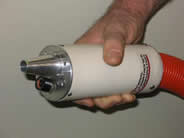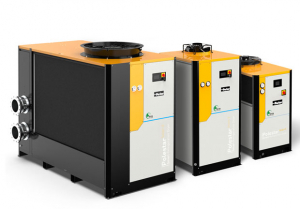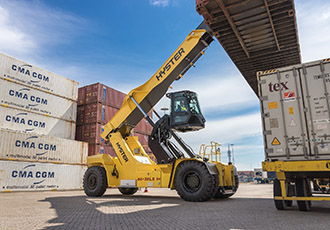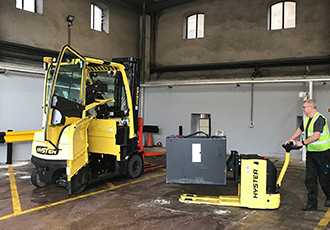Rofin high power lasers focus on material removal
29th April 2009
Source:
Rofin-Baasel UK Limited

Using the latest high power solid state lasers, paint and metallic surface coatings can be ablated either extensively or highly selectively with ever reducing cycle times.
Today, more and more surfaces are finished with functional coatings, either to protect the surface, add functionality or enhance its aesthetic features. Coatings and applications range from anodised aluminum surfaces, transparent electrical conductive coatings used to generate power, high resolution pixels in solar cells and displays, selective color application in the printing process or surface coating of steels to prevent the corrosion.
Growing alongside the increasing use of surface coatings is the need to achieve either a highly selective coating, or following a full laminar surface coating, the selective ablation of the coating. Using laser technology it has been possible for some time now to ablate a variety of surface coatings, with precise ablation widths - ranging from 20 to 50 microns being typical
Ensuring safety - at speed
The ablation of coatings or paints from a surface is usually required because the base material underneath the coating or paint is to be inspected and therefore needs to be exposed. One well known example of this requirement is on aircraft which undergo regular airframe or structural safety checks. Historically, paint or protective coatings have been removed from these surfaces using chemicals, as lasers were not able to achieve satisfactory material removal rates. However, with the introduction of Rofin’s new high performance DQ – Lasers, excellent ablation rates are now possible
Today Rofin lasers are used to remove sealants and paint from surfaces on the inside of aircraft wing tanks to expose the rivets and bolts which require inspection. The use of the laser within these often confined areas is faster than manual removal techniques. In addition, the use of a colour detection system means that surfaces which have already been cleansed of the surface coatings are not further ablated unnecessarily. A further benefit of this process is the combination of a camera with the laser focusing head, enabling the user to view progress within the tank without the need to actually access the area.
Selective ablation across a wide application area
The laser is also very well suited to linear ablation of lacquer or paint on sheet metal surfaces. One such example is the ablation of paint from the surface of automotive panels. The laser uses a series of overlapping single pulses – from 6 to 20kHz – to remove the entire paint layer in a linear fashion, without damaging the metal substrate. Larger surface areas can be processed using a combination of scanning optics and a linear motion system which also enables higher ablation rates, up to 50cm2/sec, depending upon the laser source used. The individual spot size, using this configuration, can be between 600 and 2000 μm and can still however create quite thin lines. The speed of the laser beam on the work piece can range between 3000 and 8000 mm/s. The combination of the laser pulse rate, together with the speed across the work piece and the spot size are crucial. As tests are often required to determine the optimum configuration, Rofin has a series of laser systems, from 350 to 800 Watt installed within their laboratory to enable the best process parameters to be determined for a specific application. With the laser light delivered using a flexible optical fibre, up to a length of 35m, this means that either hand-guided or robotic applications are possible, with the latter providing high speed, resolution and accuracy.
In addition to the ablation of colors and paints, other applications include the selective ablation of corrosion protection coatings on sheet metal, to enable welding operations to take place. So-called “Tailored Blanks” comprise of two or more components, potentially having different material thicknesses, which are welded together to produce a finished component. Using this process sheet metal parts are fabricated and tailored for the automotive industry. Protective coatings, such as zinc and aluminum-silicon, are detrimental to the welding operation and therefore must be removed. High power lasers provide a fast, eco-friendly and cost effective alternative to sand blasting or chemical etching processes for this application. In addition, the flexibility of the laser means that the component manufacturers can respond quickly to the requirements of the automotive manufacturer.
Another growing industrial application is the use of lasers for the ablation of layer combinations in modern thin-film solar cells. The speed and precision of the laser enable ablation rates of 50cm2/sec to be achieved, resulting in cycle times of less than 20 seconds for a cell nest. The activation of surfaces for bonding as well as structuring of flat panel displays for liquid crystal and plasma screens are further fields of application areas for the laser. The availability of the laser beam sources with power up to 1KW, from the new Rofin DQ 010, means that new applications for laser ablation will continue to be found.
Growing alongside the increasing use of surface coatings is the need to achieve either a highly selective coating, or following a full laminar surface coating, the selective ablation of the coating. Using laser technology it has been possible for some time now to ablate a variety of surface coatings, with precise ablation widths - ranging from 20 to 50 microns being typical
Ensuring safety - at speed
The ablation of coatings or paints from a surface is usually required because the base material underneath the coating or paint is to be inspected and therefore needs to be exposed. One well known example of this requirement is on aircraft which undergo regular airframe or structural safety checks. Historically, paint or protective coatings have been removed from these surfaces using chemicals, as lasers were not able to achieve satisfactory material removal rates. However, with the introduction of Rofin’s new high performance DQ – Lasers, excellent ablation rates are now possible
Today Rofin lasers are used to remove sealants and paint from surfaces on the inside of aircraft wing tanks to expose the rivets and bolts which require inspection. The use of the laser within these often confined areas is faster than manual removal techniques. In addition, the use of a colour detection system means that surfaces which have already been cleansed of the surface coatings are not further ablated unnecessarily. A further benefit of this process is the combination of a camera with the laser focusing head, enabling the user to view progress within the tank without the need to actually access the area.
Selective ablation across a wide application area
The laser is also very well suited to linear ablation of lacquer or paint on sheet metal surfaces. One such example is the ablation of paint from the surface of automotive panels. The laser uses a series of overlapping single pulses – from 6 to 20kHz – to remove the entire paint layer in a linear fashion, without damaging the metal substrate. Larger surface areas can be processed using a combination of scanning optics and a linear motion system which also enables higher ablation rates, up to 50cm2/sec, depending upon the laser source used. The individual spot size, using this configuration, can be between 600 and 2000 μm and can still however create quite thin lines. The speed of the laser beam on the work piece can range between 3000 and 8000 mm/s. The combination of the laser pulse rate, together with the speed across the work piece and the spot size are crucial. As tests are often required to determine the optimum configuration, Rofin has a series of laser systems, from 350 to 800 Watt installed within their laboratory to enable the best process parameters to be determined for a specific application. With the laser light delivered using a flexible optical fibre, up to a length of 35m, this means that either hand-guided or robotic applications are possible, with the latter providing high speed, resolution and accuracy.
In addition to the ablation of colors and paints, other applications include the selective ablation of corrosion protection coatings on sheet metal, to enable welding operations to take place. So-called “Tailored Blanks” comprise of two or more components, potentially having different material thicknesses, which are welded together to produce a finished component. Using this process sheet metal parts are fabricated and tailored for the automotive industry. Protective coatings, such as zinc and aluminum-silicon, are detrimental to the welding operation and therefore must be removed. High power lasers provide a fast, eco-friendly and cost effective alternative to sand blasting or chemical etching processes for this application. In addition, the flexibility of the laser means that the component manufacturers can respond quickly to the requirements of the automotive manufacturer.
Another growing industrial application is the use of lasers for the ablation of layer combinations in modern thin-film solar cells. The speed and precision of the laser enable ablation rates of 50cm2/sec to be achieved, resulting in cycle times of less than 20 seconds for a cell nest. The activation of surfaces for bonding as well as structuring of flat panel displays for liquid crystal and plasma screens are further fields of application areas for the laser. The availability of the laser beam sources with power up to 1KW, from the new Rofin DQ 010, means that new applications for laser ablation will continue to be found.
Similar articles
More from Rofin-Baasel UK Limited
- Rofin's Vision for Perfect perforations 8th August 2011
- ROFIN’s PowerLine L Series Designed for High-Speed Micro Material Processing 11th June 2010
- ROFIN’s Marathon Marking Session 18th May 2010
- Rofin-Baasel Receives Intel’s Preferred Quality Supplier Award For The Third Consecutive Year 19th March 2010




.jpg)







Write a comment
No comments